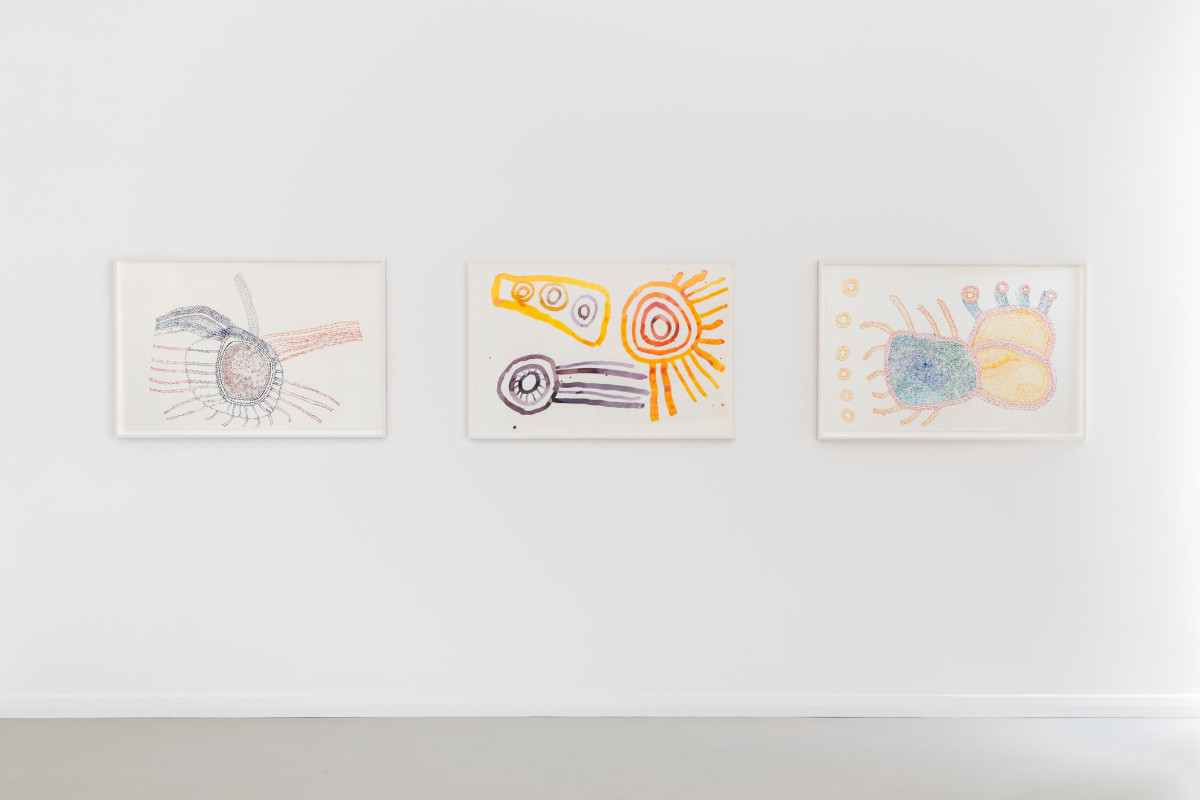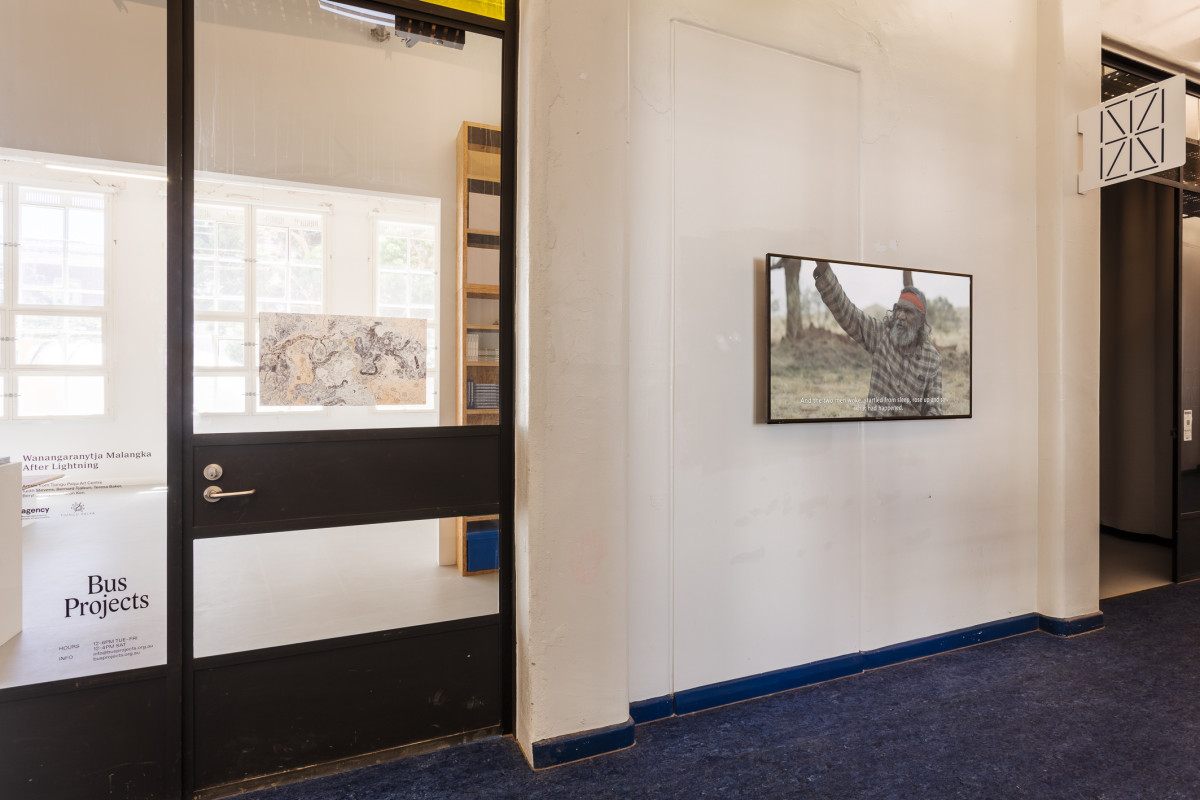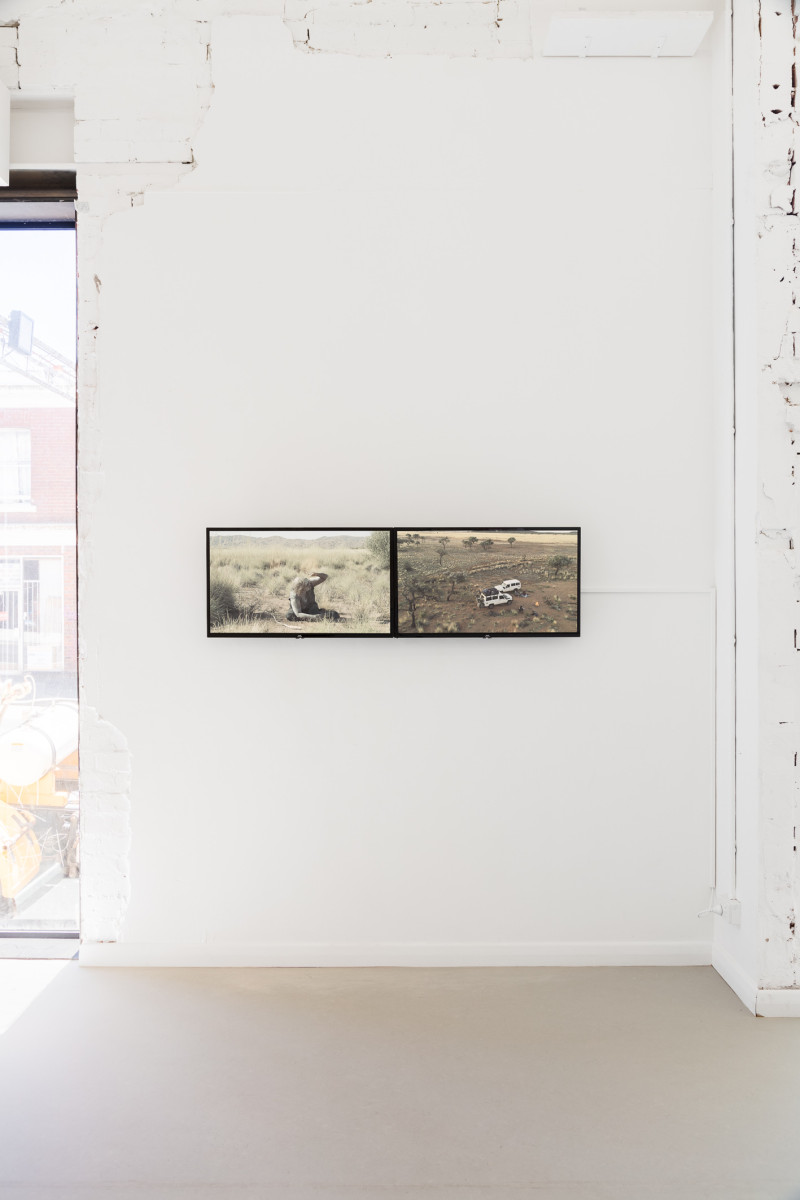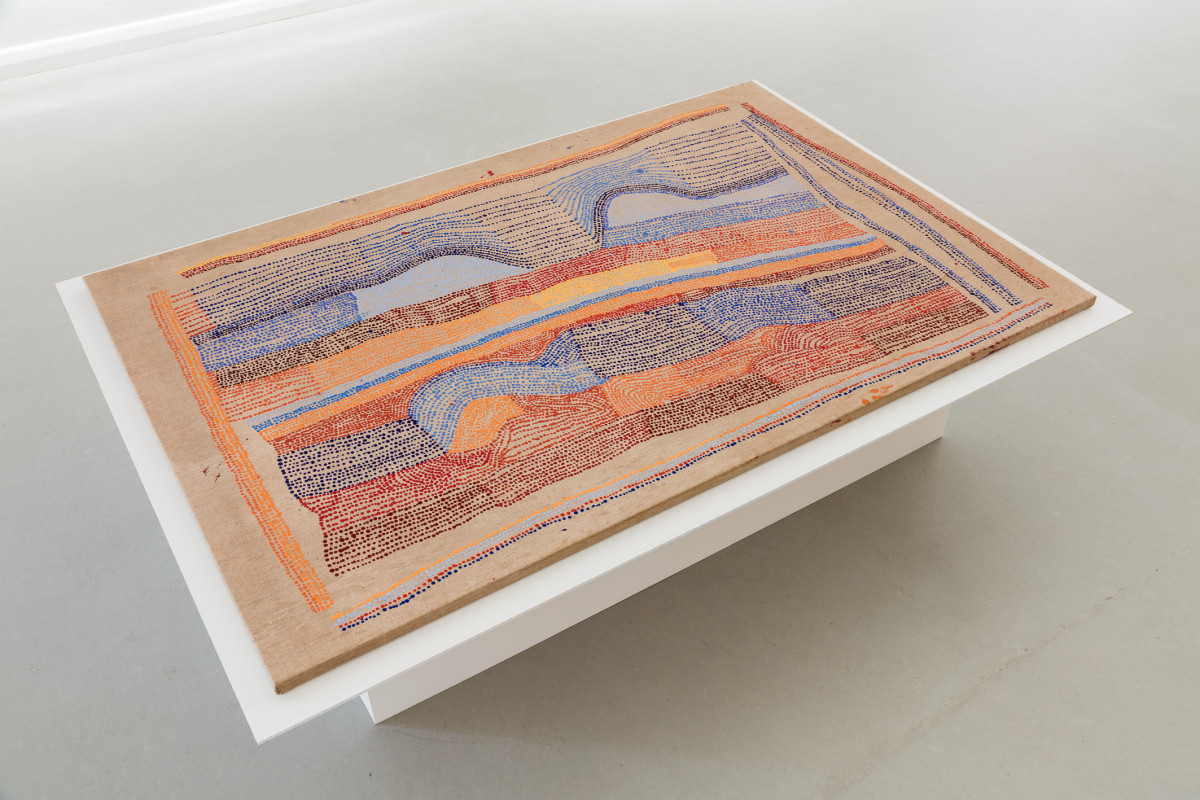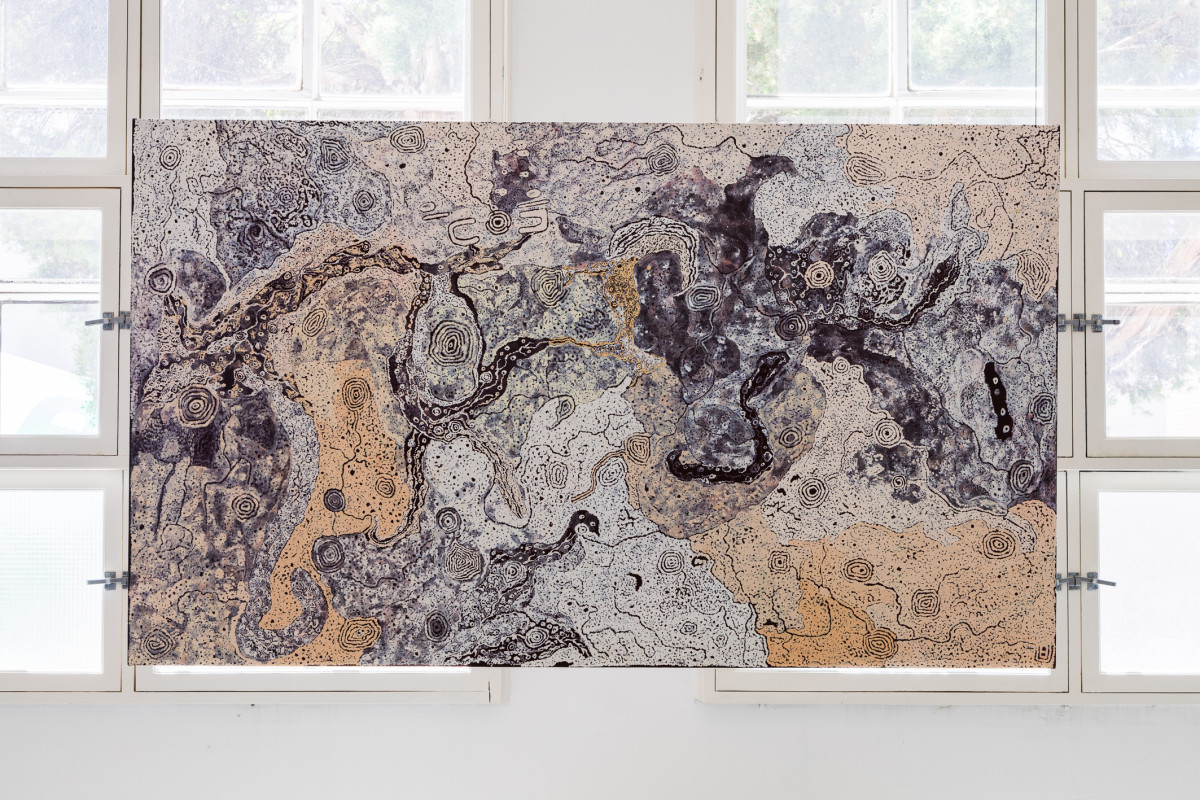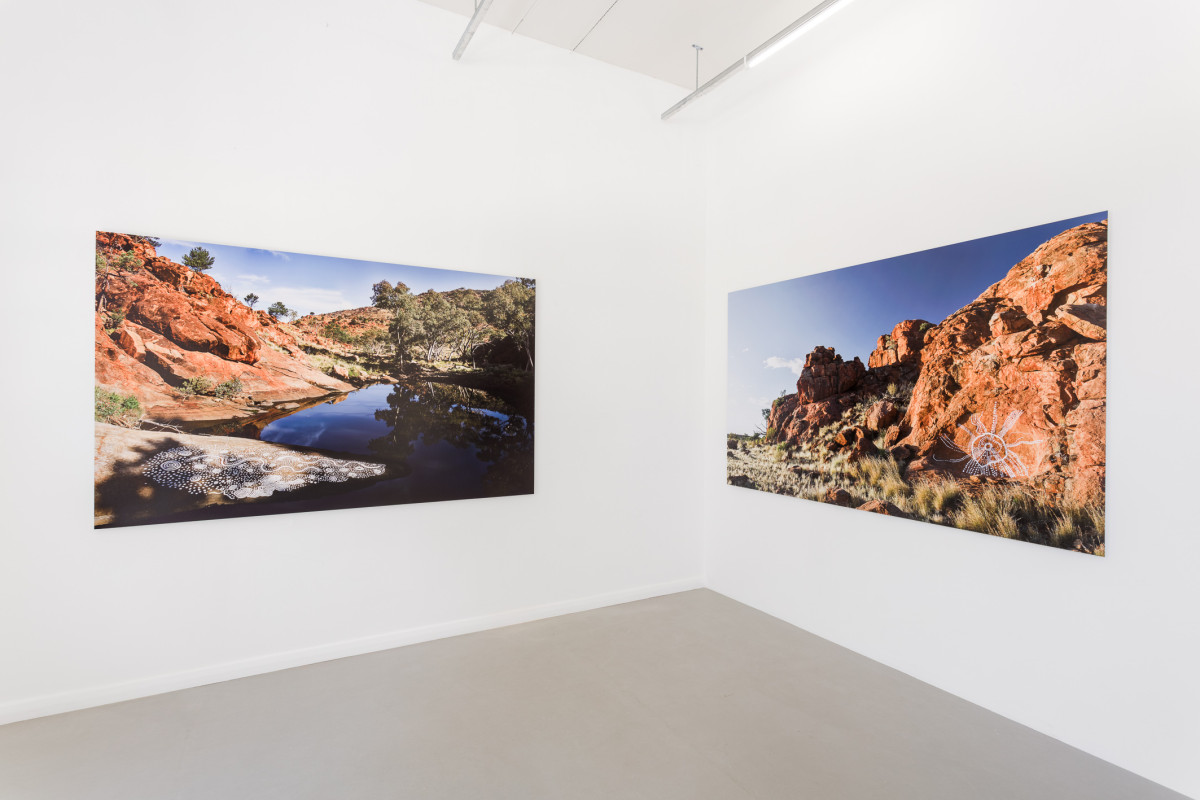Exhibits,
Artists from Tjungu Palya, led by Keith Stevens and Bernard Tjalkuri Wanangaranytja Malangka | After Lightning
Opening: Wednesday 19 January Dates: Wednesday 19 January - Saturday 19 February 2022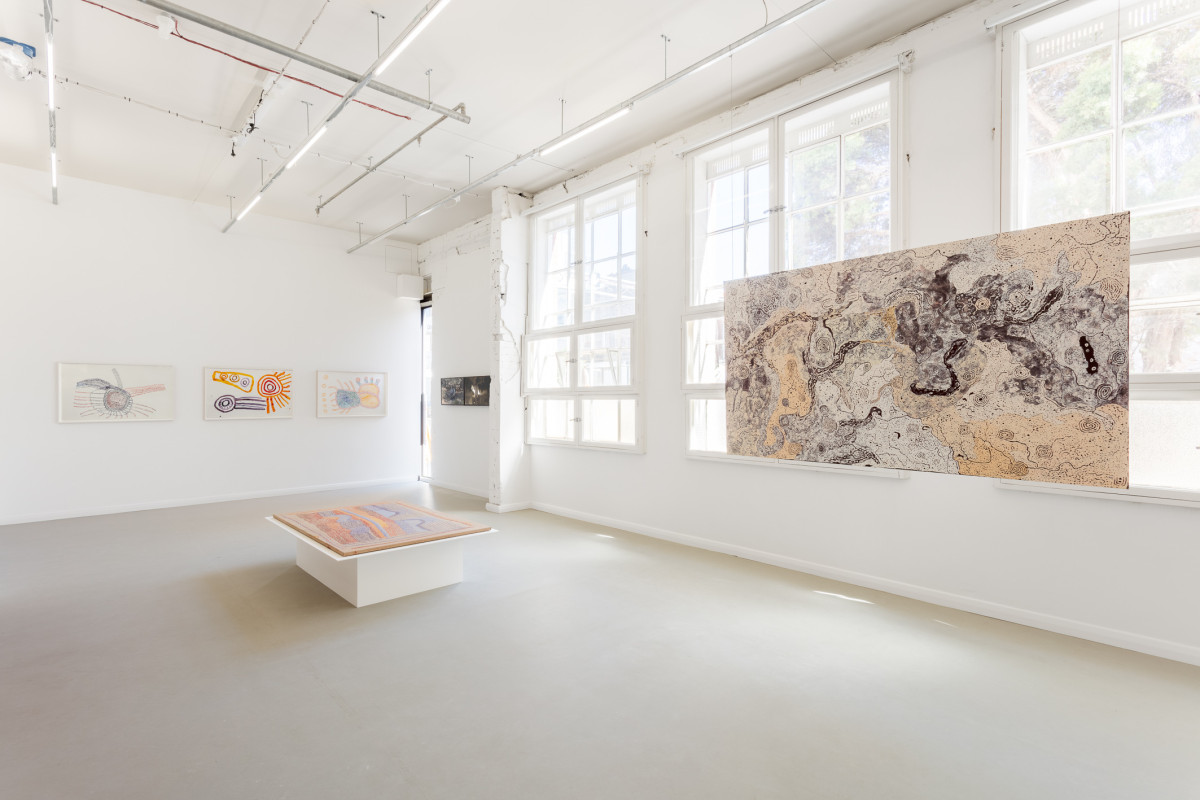
Wanangaranytja Malangka | After Lightning is an exhibition co-presented with Agency, by key artists from Tjungu Palya (meaning ‘good together’), an Indigenous owned and governed art centre based on the Aṉangu Pitjantjatjara Yankunytjatjara Lands in South Australia. The exhibition and intergenerational project features the work of artists from the three communities that Tjungu Palya represents: Keith Stevens, Bernard Tjalkuri, Teresa Baker, Beryl Jimmy and Aaron Ken from the communities Nyapari, Kanpi and Watarru.
Wanangaranytja Malangka | After Lightning is a site-specific land-art project; an artist directed and featured video, documentary sound works, paintings and ink drawings on paper. This exhibition traverses many interconnected Tjukulpa (stories) and sites of prime cultural importance, a culmination of the diverse and exploratory ways in which Tjungu Palya artists engage in cultural preservation and intergenerational exchange through artistic creation.
Senior artists and lore men Keith Stevens and Bernard Tjalkuri lead the exhibition with selected works from the project Painting on Country. Painting on Country saw the return of senior artists to their respective Country to create large rock drawings in tjutu (natural pigment), in their signature, contemporary painting styles.
These land paintings and the ensuing photographic documentation encapsulates the monumentality of Country and an act of both political and creative significance, whilst touching on a poetic ephemerality, the capturing of a fleeting moment in time - artworks that washed away in the first summer rains. These photographs are an act of generosity, letting viewers in to a space that usually goes unseen by most Australians.
White fellas are seeing all our work on canvas but we want people to see the places that really are this dreaming. Then you will see how much we love our country and why we always want to stay here. — Keith Stevens.
Technical support was provided by German photographer Leopold Fiala on this project, assisting the artists to capture their vision, recording a significant moment in time such that it could be shared with a wide and far reaching audience. This project has been shown at the NMA in Canberra, the 2016 Aboriginal and Torres Strait Islander Tarnanthi Festival in Adelaide and in Switzerland at the Foundation Opale. Editions of these photographs are held in several private and public collections both nationally and internationally.
This is not rock art. These are not photographs. These are not paintings. These are not photographs of paintings. These are flashes of lightning upon a landscape most of us barely understand.— John Carty, Director of the South Australian Museum.
Keith Stevens is a senior Pitjantjatjara man born in the far north of SA at Granite Downs station where his parents worked in the 1940’s. Following in his parents footsteps he was mustering at an early age and later attended school when his family moved to Ernabella mission. Keith’s family would travel for weekends to their traditional homelands of Piltati and Iwarrawarra. Later in his childhood, Keith’s father sat down with his family close to Piltati creek at what is now Nyapari Community. Keith is a respected elder and a strong community leader. Today, Keith is a man of both worlds; a highly respected lore man and a Christian Pastor. Keith is a skilled painter of his Tjukurpa in the modern medium of acrylics. His careful application of rich colour in intricate patterning, creates abstract topographical descriptions of the Piltati plateau and gully. Keith’s highly distinctive textured fields of colour evoke an ancient landscape, the country of the Tjukurpa. His intimate knowledge of his country is referenced in his works with important landmarks depicted across his canvases. These are dynamic works that have a magical quality, which sing out and touch the viewer. Keith comes from an artistic family, his mother Eileen Yaritja Stevens (dec) and his Uncles Tiger Palpatja and Ginger Wikilyiri are well known for their depictions of Piltati the ancestral story for Nyapari. Keith also paints the Tjukurpa of his traditional land Piltati.
Nyapari ngura ka Piltati ngura. Minyma kutjara nyinanyi waruangka. Kangkuru ini Wanyinta ka malanypa ini Alartjatjarra. Tjana Maliluku untalpa. Wati kutjara nyangatja, tjukurpa minymaku ngura minyma kutjara, minyma tjukurpa unngu. Tjana mukaringkula kilinangkupai maiku kukaku mukuringkula. Palumpa ngura ngara palulanguru tjana ankupai maiku kukaku mantjintjikitatja. Tjana wana katipai munu wira tjawantjakitjaku munu tjana katipai waru tjangi. Painta nyangatja Piltatiku tjukurpa. This is country for Nyapari and Piltati. The two women from Piltati are sitting by their fire. The elder sister is Wanyinta and the younger is Alartjatjarra. These are Malilu’s daughters. This is Piltati. There are two men here and two women. The womens story is underground. If people want meat or bush tucker they go to this place and clean around and talk to the area. From here those two women would go out and collect their food. They would carry a digging stick and collecting bowl and also a fire stick. This is Piltati story.
Bernard Tjalkuri was born in the bush at Waltja rockhole close to the homeland of Kunumata in the far north west of the Pitjantjatjara Lands of northern South Australia in 1930. Bernard’s mother’s country is Watarru and his father’s place is Aparatjara, which is located near Kanpi community. Bernard lived a traditional nomadic life in the desert prior to contact with Europeans. He remembers seeing ‘whitefellas’ travelling through his country as they headed west to the Warburton Mission when he was a young man. Bernard has authority to paint many stories tied to his country. He is an important community elder with a wealth of knowledge of lore or Tjukurpa. This cultural knowledge is handed down orally in the retelling of Tjukurpa (traditional stories of the ancestors’ journeys), which not only sustain Anangu (Aboriginal people) physically, but socially and spiritually. Paintings which hold Tjukurpa depict a fragment of a larger story, a living history where an ancestor was involved in creating country. Individuals have authority and ownership of this land and the associated sites and stories. The maintenance of country and Tjukurpa is paramount to artists of Watarru and they continue to care and manage the land with respect and responsibility.
Teresa Baker was born in 1977 in Alice Springs hospital. Her mother Kay Baker is a Pitjantjara woman from Kanpi and her father a Pitjantjatjara man from Yalata. Teresa spent much of her youth with her grandfather Jimmy Baker, learning about the country and the sacred stories associated with it. Today she works full-time at Murputja school and is passing on the knowledge she learned to the next generation. She continues her teacher training with annual courses and cares for 5 children, still finding time to paint in school holidays and evenings. While Teresa’s paintings have qualities reminiscent of her late grandfather Jimmy Baker (her teacher and mentor), she has found her own individual way of mark-making and using iconography. Like her grandfather, she utilises the power of negative space, which paired with her own self-taught understanding of nuance in the use of colour, create dramatic effects in her paintings.
Beryl Jimmy is a Pitjantjatjara woman living in the community of Nyapari in the far north west of South Australia, part of an area referred to as the Western Desert. She was born in 1970 at Watarru, a recently closed community in the south of the APY Lands. Beryl’s work is inspired by a deep connection to country and her spiritual links to the desert are expressed with integrity, beauty and creativity. Traditional knowledge of food collection and water sources were vital for survival in the desert landscape and is a prominent theme in her work. This cultural knowledge is handed down orally in the retelling of the Tjukurpa (traditional stories of the ancestors’ journeys), which not only sustains Anangu (Aboriginal people) physically, but socially and spiritually. Tjukurpa painting depicts a fragment of a larger story, a living history where an ancestor was involved in creating country. Individuals have authority and ownership of this land and the associated sites and stories. The maintenance of this country is paramount to artists of Watarru and they continue to care and manage the land with respect and responsibility.
Aaron Ken (1994) is a young emerging painter from Watarru. He has been passed down the culture of his country by his grandfather - senior cultural leader, Bernard Tjalkuri. Aaron paints the dreaming site of Tjitji Tjuta and comes from a long line of successful and internationally acclaimed artists from Watarru.
